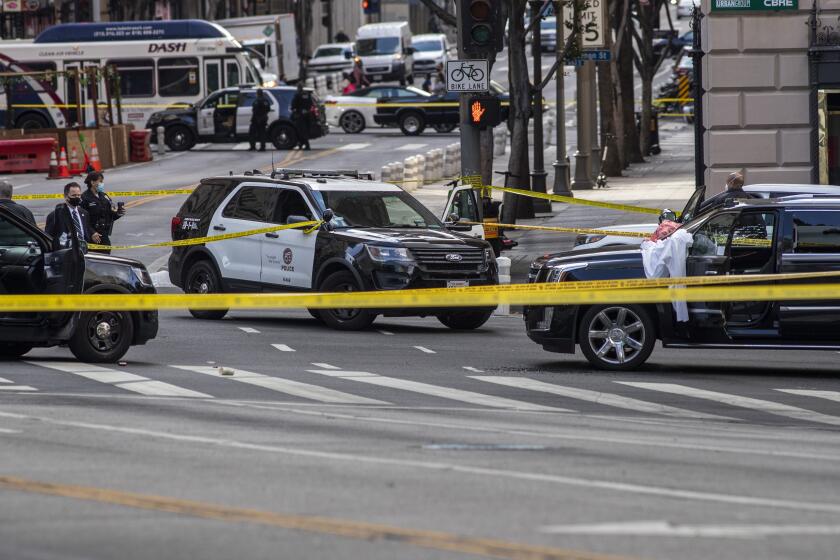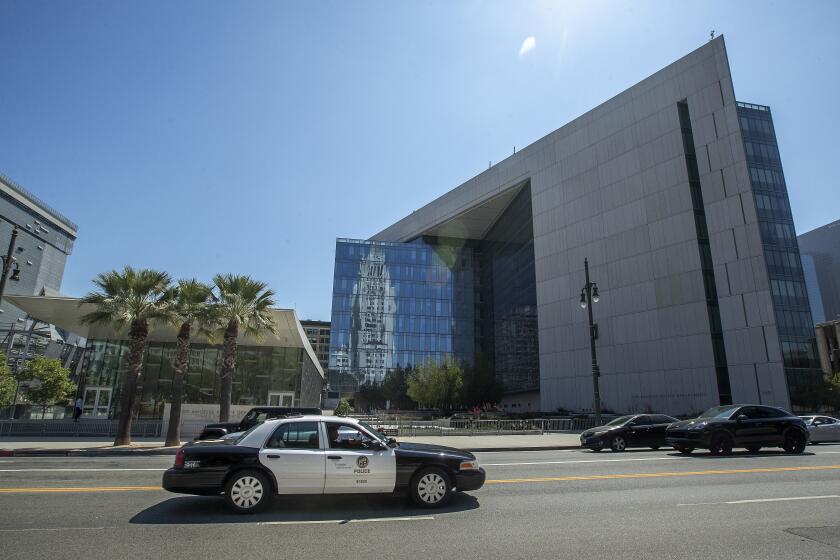Latino and Black victims account for nearly all of L.A.’s surge in homicides
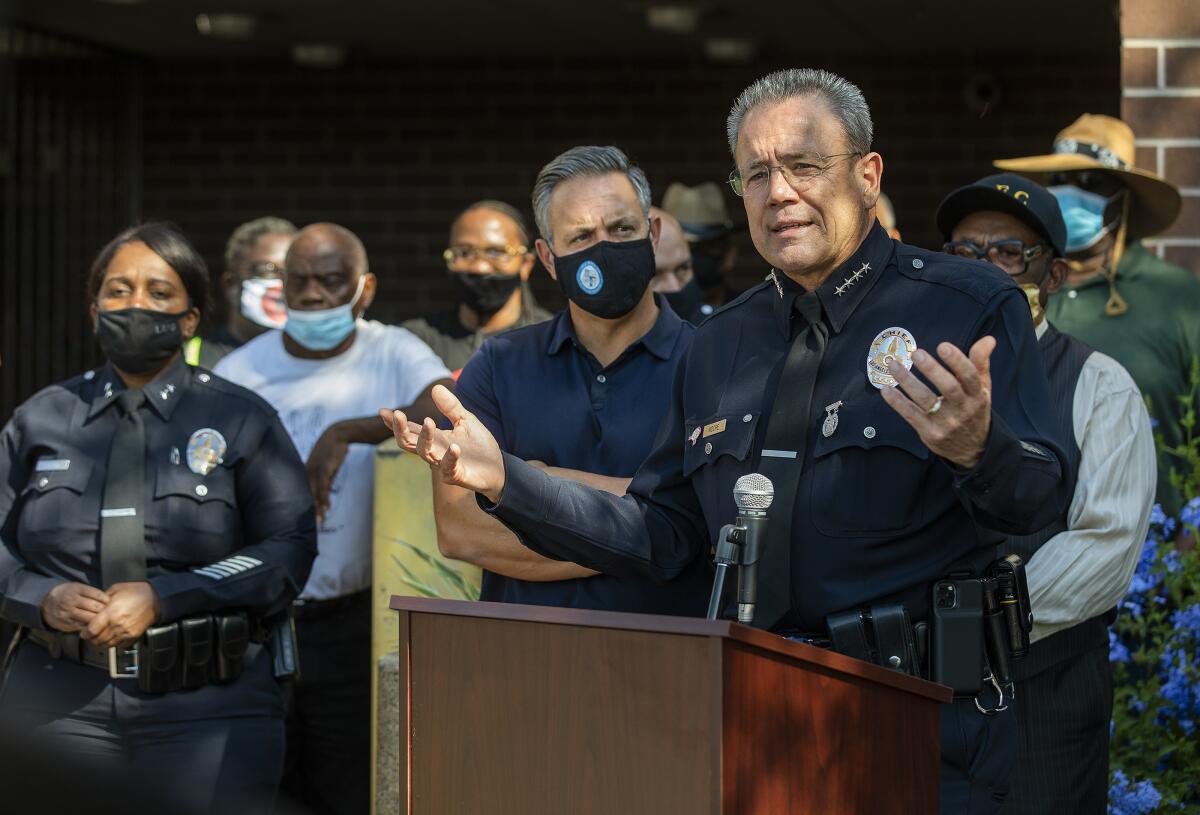
The surge in homicides in Los Angeles since the start of the COVID-19 pandemic has played out almost entirely among Latino and Black victims, according to a Times analysis of Los Angeles Police Department data.
The figures reflect wide disparities in public safety across the city, experts say, as well as compounding trauma for communities of color hit hard by past gang violence and devastated at disproportionate rates by the economic and social upheaval of the last 18 months.
Police attribute much of the latest violence to gangs, but the impact has been felt by victims old and young, homeless and housed, sitting in their cars and working a shift.
“It speaks to the two Los Angeleses,” said Jorja Leap, a UCLA professor and longtime government consultant on L.A. gangs. “I am deeply concerned.”
Kevin “Twin” Orange, a gang intervention worker for the city, said the pandemic is fully to blame, because it undercut so many programs designed to stop violence.
Four months into 2021, life is returning to normal as vaccination efforts drive down COVID-19 infections. But L.A.’s elevated gun violence is not receding apace.
He had hoped things would settle down soon but now fears the latest increase in coronavirus cases from the Delta variant will spur more shutdowns — and more violence.
“We could find ourselves going back down that dark hole again,” he said.
In the 18-month period from January 2020 through this June, there were 266 Latino victims killed in L.A., compared with 182 Latino victims in the prior 18-month period — a 46.2% increase.
There were 192 Black victims, compared with 151 Black victims in the previous period, for a 27.2% increase. Victims whose race was described as “other” were fewer in number, but increased more sharply — from 14 to 30, for a 114.3% increase.
White victims, also smaller in number, increased marginally, from 38 to 40 victims, or a 5.3% increase.
While Latinos represented the largest portion of victims, Black people were the most overrepresented among victims when compared with the city’s overall population, the data show.
Latinos account for 49% of the city’s population, according to U.S. Census data, and 50% of homicide victims during the more recent 18-month period. Black people account for just 9% of the city’s population, but 36% of the victims. Non-Latino white people account for about 29% of L.A.’s population, but less than 8% of the victims.
Data on homicide suspects are less complete — and therefore less conclusive — than victim data because many killings go unsolved. However, available data do indicate similar racial disparities among homicide suspects.
Of those killings between 1998 and 2020 where police recorded a description of the suspect’s race, 50% were Latino and 34% were Black, while 4% were white and 3% were listed as “other.” This year, 42% of noted suspects have been described as Latino, 46% Black and 4% white, according to LAPD data.
Los Angeles Police officials joined elected officials, community leaders and local clergy members to denounce violence in South L.A. and ask for the community’s help addressing it.
Racial disparities in who is impacted by violence are not new in L.A., and they have long been used as a political hammer to drive home demands for more aggressive policing in certain communities.
The latest data have similarly attracted attention, this time within a broader debate — amplified by last year’s mass protests — about the future of policing and public safety in L.A., particularly in communities of color where crime, poverty, distrust of police and pandemic-driven insecurity all run deep.
In the LAPD’s end-of-year report on 2020 crime, officials noted the unequal spread of violence in the city, writing that Angelenos last year “were being victimized in our most vulnerable neighborhoods.”
In a recent speech, newly appointed Police Commission President William Briggs, who is Black, cited the disparate violence as a major reason why he rejects the idea, favored by activists, that the LAPD should be defunded.
“Our communities of color that are most impacted by crime, many of which have seen the homicide rate rise [by more than] 30% this year, cannot afford to go without law enforcement,” Briggs said.
LAPD Chief Michel Moore and other police commanders have repeatedly joined community leaders, clergy and victim advocates in South L.A. in the last year to call for a stop to the shooting and killing, noting that many of the victims are young Latino and Black men.
Moore recently told the Police Commission that he is deploying more officers to hard-hit neighborhoods as part of a summer plan to reduce the violence but that detectives need more help from community members to solve shooting cases — which have risen dramatically.
After being appointed president of the Los Angeles Police Department’s oversight panel, attorney William Briggs promptly rejected the notion that the LAPD should be “defunded.”
While detectives this year are solving nearly 70% of homicides, he said, they are only solving about 20% of nonfatal shootings, with 250 more cases to handle than in the year prior. Trigger-pullers, he said, are being allowed to harm the community over and over.
“We need to make sure the public is working with us, and us with the public, to identify the people responsible,” Moore said.
Shalonda Madison, whose 53-year-old sister, Fatima Johnson, was found killed inside her Manchester Square apartment in South L.A. on July 4, said Black families like hers and Latino families are already willing to help police and want nothing more than for their loved ones’ killings to be solved.
But they don’t sense the same commitment from the LAPD, she said.
Too often, shootings and killings of Black and Latino people are immediately written off as being “gang” related, she said, and get far less attention from police — and from the media — than killings of white people, or killings in rich neighborhoods.
“What I would like to see happen is that they pay just as much attention to Black women, Latino women, minority people, as they do to white women,” Madison said. “I would like to see them treat us like they treat areas that are not poverty areas.”
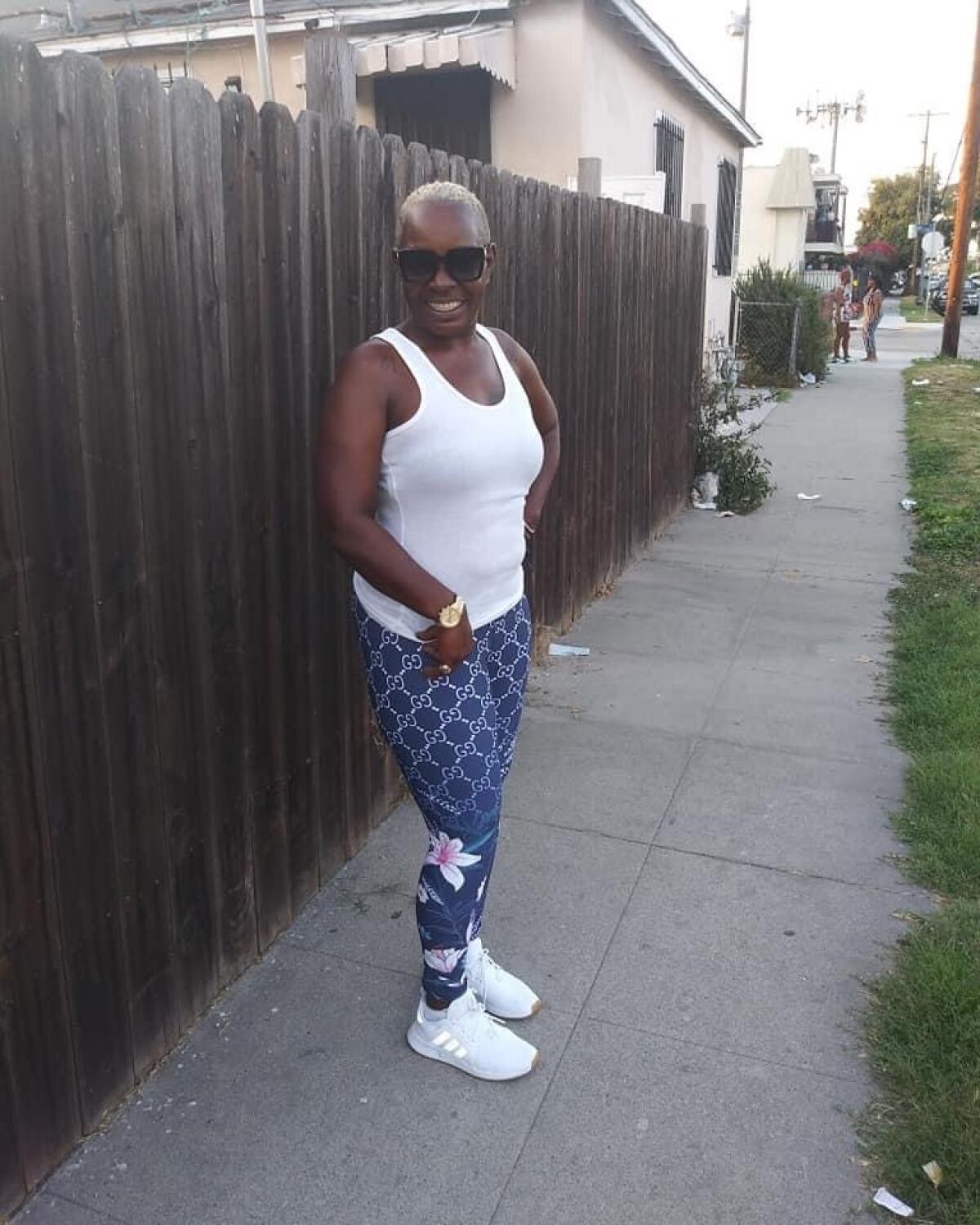
Activists have also flagged the outsized impact of violence in communities of color but offer a different prescription than police for solving it — arguing that defunding the LAPD would free up funding for social services that would do more to change the tide than any added patrols.
Community leaders, intervention workers and experts say they are dismayed by the violence and its impact on community members, and blame the pandemic for much of it. They also said they want to see a balanced approach to addressing it that prioritizes the restoration of community-based support and safety programs rather than a return to outdated, aggressive policing.
William Gude, a prominent LAPD critic whose 22-year-old son Marcelis Gude was fatally shot in South L.A. in June, said he wants the police to solve his son’s killing and those of other young Black and Latino victims — killings that he believes too many people in L.A., especially “white progressives,” are uncomfortable acknowledging.
“There’s an endemic [problem] in South L.A. where Black kids and Hispanic kids are killing each other,” Gude said. “If we want to actually address the issue, we have to be truthful and honest with ourselves.”
At the same time, police cannot be the only answer, said Gude, who is Black.
While the LAPD must remain committed to solving violent crimes, it should acknowledge its efforts to prevent crime — including pretextual stops of Black and brown motorists — aren’t effective, Gude said, and cede a substantial portion of its budget to social service providers that might have better luck driving down the violence by reaching those who would commit it before they pick up a gun.
“If we want to stop the next child from being murdered, we need to intervene beforehand,” Gude said.
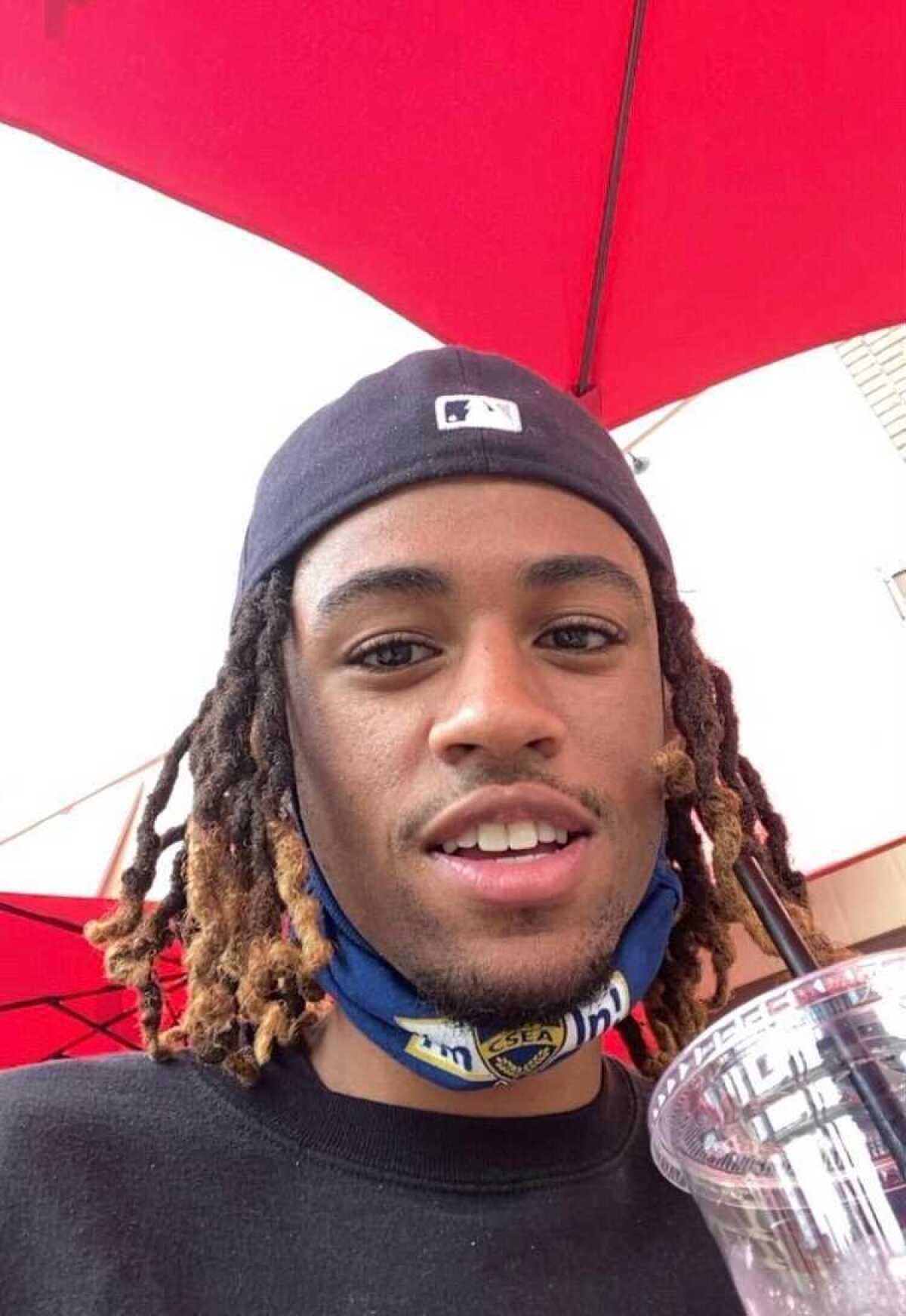
Leap, the UCLA expert who has advised L.A. and L.A. County on local gangs for years, said there is no question the pandemic stirred up drug disputes and increased the city’s “baseline of violence.”
“Drug dealing is not a peaceful endeavor,” she said. “People try to make forays into different drug markets, and it’s kill or be killed.”
However, the violence also has been “exacerbated literally by hunger, by worse poverty, by people not having money, by people being desperate,” Leap said.
Programs for kids like Summer Night Lights were canceled. Interventionists were blocked from going to the bedside of shooting victims. Recreational programs were curtailed. Programs aimed at getting people out of gangs, or resettled after stints in prison, were hampered.
People who had relied on such programs were driven into a “spiral of despair” by their collapse, which precipitated violence that will only stop once those programs are back in place, Leap said.
Orange, the gang interventionist, said folks like him never stopped trying to engage people in the streets, but there were limits to what they could do.
Young people left with fewer social outlets and fewer positive role models in their day-to-day lives turned increasingly to social media, where rival crews started petty beefs in a deadly game of one-upmanship in which a post from inside a rival crew’s territory one day could spur a shooting the next, Orange said.
“If it’s not a lot of good people out there showing something different, [young people] are always going to pick up negative things, because negative things are always going to be present,” Orange said.
Father Greg Boyle has worked with gang members in L.A. for decades with Homeboy Industries, an organization that provides rehabilitation and reentry services. This year has been tough, he said, but he hopes city officials avoid the “draconian, get tough” policing prescriptions of the past in favor of programs aimed at healing trauma, addressing need and providing opportunity.
Boyle said violence is always about a “lethal absence of hope,” and the pandemic made it harder for people to hold on to hope and see a prosperous future.
“Healing,” he said, “is the only thing that is going to reduce crime in the city.”
Danny Hernandez, president of the Hollenbeck Youth Center, has worked with youth in East Los Angeles for decades, and said the violence — while not as bad as it was in the 1990s — is deeply troubling, particularly for the Latino and Black kids who have to grow up in it.
Hernandez said he believes in the power of good, community policing to drive down violence, and also that Black Lives Matter and other activist organizations are bringing needed attention to abuses in law enforcement and the need for increased resources in communities of color.
He thinks effective policing and added resources are both needed to stop the violence, and said he hopes that everyone who wants safer neighborhoods in L.A. soon realizes that the best path forward is a collaborative one.
“If people would create an environment where everyone feels free to talk and feels as though they have a part in it, relationships could form,” Hernandez said. “Over a period of time, good things could happen.”
More to Read
Sign up for Essential California
The most important California stories and recommendations in your inbox every morning.
You may occasionally receive promotional content from the Los Angeles Times.
